FOOD, NUTRITION & WELLNESS
GES WELLNESS POLICY & PLAN

FREE MEALS AVAILABLE
School meals are critical to student health and well-being and ensures that students have the nutrition they need throughout the day to learn. Our department is committed to providing healthy and delicious meals prepared and served with the most care to our GESD students. We participate in the National School Lunch Program (NSLP) and School Breakfast Program (SBP).
CA Universal Free School Meals (SY 2024-25)
The State's meal mandate for universal free school meals will continue in SY 2024-25. GESD will provide free breakfast and lunch for all enrolled students requesting a meal, regardless of their meal eligibility for the 24/25 school year. Although meals will be free to students, our state and federal funding is determined by meal eligibility, so we encourage households to complete SY 2025-26 meal applications after July 1.
Each student is allowed one (1) free breakfast meal and one (1) free lunch meal every school day. The meal must be consumed on campus. A free meal must include a fruit serving and/or a vegetable serving.
Please submit a meal application for the 2025-2026 SY. Completing an application could make your child(ren) eligible for future Pandemic-EBT benefits and helps provide funding for school programs.
Meal Application 2025-2026 SY.pdf
Pricing Letter to Households 2025-2026 SY.pdf
*Please visit the "Menus" page for up-to-date menus.
All Allergen, Carbohydrate and full nutritional information now available online on our Menus page to the left. Follow along our menu day by day and know what's available to your students
Notice: The California Revenue and Taxation Code (RTC) Section 19853(b) requires local educational agencies (LEA) that operate the National School Lunch Program (NSLP) to annually notify households about the Earned Income Tax Credit (EITC) Information Act.
See below for more information.
MENUS/ NUTRITIONAL INFORMATION
Meals, foods and beverages sold or served at schools meet state and federal requirements based on the USDA Dietary Guidelines. All meals, foods and beverages are prepared and served by qualified child nutrition professionals.
Please visit our ONLINE MENU page to view nutrition and allergen information.

Statement Of Non-Discrimination
In accordance with Federal civil rights law and U.S. Department of Agriculture (USDA) civil rights regulations and policies, the USDA, its Agencies, offices, and employees, and institutions participating in or administering USDA programs are prohibited from discriminating based on race, color, national origin, religion, sex, disability, age, marital status, family/parental status, income derived from a public assistance program, political beliefs, or reprisal or retaliation for prior civil rights activity, in any program or activity conducted or funded by USDA (not all bases apply to all programs). Remedies and complaint filing deadlines vary by program or incident.
Persons with disabilities who require alternative means of communication for program information (e.g., Braille, large print, audiotape, American Sign Language, etc.) should contact the State or local Agency that administers the program or contact USDA through the Telecommunications Relay Service at 711 (voice and TTY). Additionally, program information may be made available in languages other than English.
To file a program discrimination complaint, complete the USDA Program Discrimination Complaint Form, AD-3027, found online at How to File a Program Discrimination Complaint and at any USDA office or write a letter addressed to USDA and provide in the letter all of the information requested in the form. To request a copy of the complaint form, call (866) 632-9992. Submit your completed form or letter to USDA by:
1) mail: U.S. Department of Agriculture, Office of the Assistant Secretary for Civil Rights, 1400 Independence Avenue, SW, Mail Stop 9410, Washington, D.C. 20250-9410;
(2) fax: (202) 690-7442; or
(3) email: program.intake@usda.gov.
USDA is an equal opportunity provider, employer, and lender.
For more information:
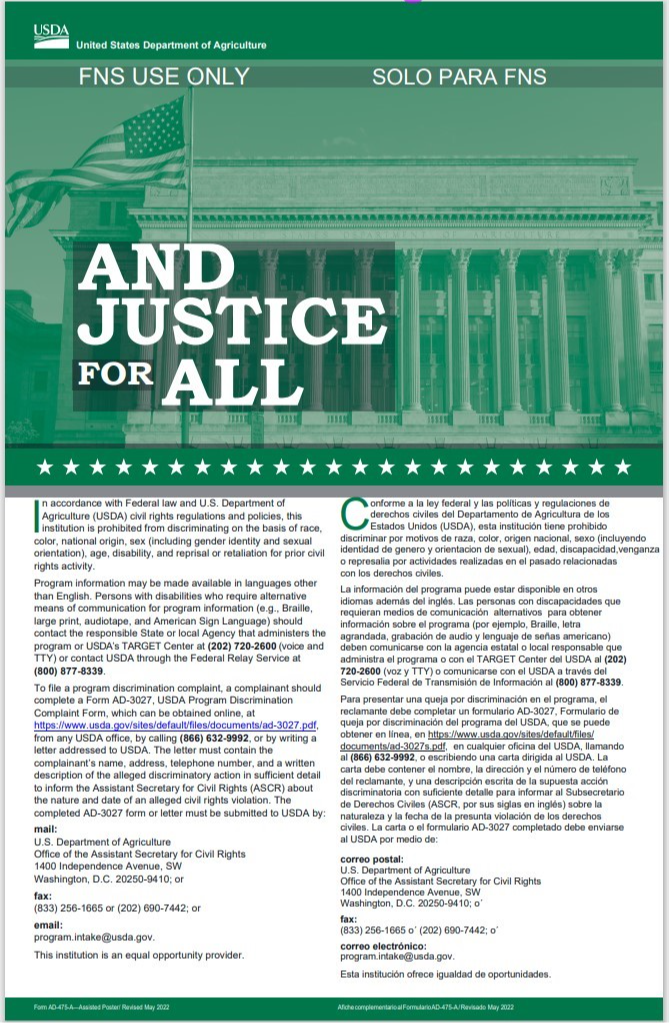
Complaint Acceptance Procedure: Civil Rights

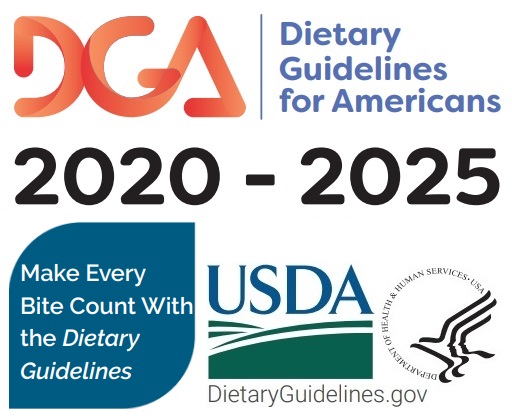
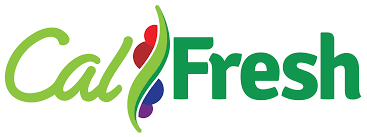
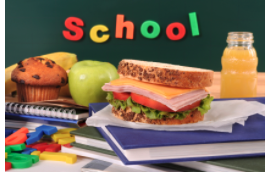
Earned Income Tax Credit Information Act Communication
Notice: The California Revenue and Taxation Code (RTC) Section 19853(b) requires local educational agencies (LEA) that operate the National School Lunch Program to annually notify households about the Earned Income Tax Credit (EITC) Information Act. The EITC is a benefit for working people with low to moderate income. In order to qualify for the EITC, households must meet certain requirements and file a tax return, even if taxes are not owed or households are not required to file. The EITC reduces the amount of tax households owe and may allow for a refund.
Based on your annual earnings, you may be eligible to receive the Earned Income Tax Credit from the Federal Government (Federal EITC). The Federal EITC is a refundable federal income tax credit for low-income working individuals and families. The Federal EITC has no effect on certain welfare benefits. In most cases, Federal EITC payments will not be used to determine eligibility for Medicaid, Supplemental Security Income, food stamps, low-income housing, or most Temporary Assistance For Needy Families payments. Even if you do not owe federal taxes, you must file a federal tax return to receive the Federal EITC. Be sure to fill out the Federal EITC form in the Federal Income Tax Return Booklet. For information regarding your eligibility to receive the Federal EITC, including information on how to obtain the Internal Revenue Service (IRS) Notice 797 or any other necessary forms and instructions, contact the IRS by calling 1-800-829-3676 or through its website at www.irs.gov.
You may also be eligible to receive the California Earned Income Tax Credit (California EITC) starting with the calendar year 2015 tax year. The California EITC is a refundable state income tax credit for low-income working individuals and families. The California EITC is treated in the same manner as the Federal EITC and generally will not be used to determine eligibility for welfare benefits under California law. To claim the California EITC, even if you do not owe California taxes, you must file a California income tax return and complete and attach the California EITC Form (FTB 3514). For information on the availability of the credit eligibility requirements and how to obtain the necessary California forms and get help filing, contact the Franchise Tax Board at 1-800-852-5711 or through its website at www.ftb.ca.gov.
For additional information, refer to the IRS EITC web page at https://www.irs.gov/credits-deductions/individuals/earned-income-tax-credit or the California EITC web page at https://www.ftb.ca.gov/file/personal/credits/california-earned-income-tax-credit.html.
Contact Information
If you have questions regarding this subject, please contact the IRS by phone at 800-829-3676 or through its website at www.irs.gov. You can also contact the Franchise Tax Board by phone at 800-852-5711 or through its website at www.ftb.ca.gov.
Nutrition Services Division
California Department of Education
Web | www.cde.ca.gov/ls/nu/
Twitter | @CDENutrition
Course Catalog www.cde.ca.gov/ls/nu/ed/cnpcoursecatalog.asp
Keri Patti- Director of Food Services
The Grenada Elementary School District participates in the National School Lunch Program. The NSLP is federally funded and provides nutritionally balanced, low cost lunches to children each school day.
For children, the National School Lunch Program provides a nutritious meal that complies with Dietary Guidelines for Americans. For parents, the program offers a convenient method of providing a nutritionally balanced lunch at the lowest possible price. For schools, the program enhances children's learning abilities by contributing to their physical and mental well being. Studies have shown that children whose nutritional needs are met have fewer attendance and discipline problems and are more attentive in class.
What are the nutritional requirements for school lunches? School lunches must meet the applicable recommendations of the Dietary Guidelines for Americans, which recommend that no more than 30 percent of an individual's calories come from fat, and less than 10 percent from saturated fat.
Regulations also establish a standard for school lunches to provide one-third of the Recommended Daily Allowances of protein, Vitamin A, Vitamin C, iron, calcium and calories.
School Lunches must meet the following nutrition standards:
No more than 30% of calories from fat
Less than 10% from saturated fat
No artificial trans fat
1/3 of the Recommended Daily Allowances for key nutrients
School lunches must meet Federal nutrition requirements, but decisions about what specific foods to serve and how they are prepared are made by local school food authorities
Any child may purchase a meal (Breakfast or Lunch) through this program. Children from families with incomes below poverty are eligible for free or reduced priced meals. Please file an application with the Director of Food Services. Please call (530)436-2233 with additional questions concerning this program.
Special Dietary Needs for Students
Special Dietary Needs for Students with Disabilities
Student Nutrition Services is required to offer special meals, at no additional cost, to students whose disability restricts their diet as defined in USDA’s nondiscrimination regulations, 7 CFR, Part 15b.
A child with a disability must be provided substitutions of special foods, including special supplements, when a statement signed by “a recognized medical authority” (licensed physicians, physician assistant, or nurse practitioner) supports that need. “The Medical Statement to Request Special Meals” form must be signed by a recognized medical authority.
The completion of the Medical Statement is required to ensure that the modified meal is reimbursable, and to ensure that any meal modifications meet nutrition standards that are medically appropriate for the child.
Medical Statements are in effect until the condition changes or until the student transfers, promotes to a new school, or leaves the district. If the condition changes, a revised Medical Statement form signed by a recognized medical authority must be submitted.
For children with disabilities who only require modifications in texture (such as chopped, ground, or pureed foods), a recognized medical authority’s written instruction, indicating the appropriate food texture is required.
Special Dietary Needs of Students WITHOUT Disabilities
Student Nutrition Services may make reasonable accommodations for students who are not disabled, but who are unable to consume a food item because of medical or other special dietary needs. Such determinations will be made on a case by case basis when supported by a statement (using the Medical Statement form), signed by a recognized medical authority (licensed physicians, physician assistant, or nurse practitioner). This provision covers those students who have allergies or food intolerance’s but do not have life-threatening or anaphylactic reactions.
Student Nutrition Services does not make meal accommodations based on personal preferences or religious convictions.
Responsibilities of Parents/Guardians
Parents/Guardians must provide a completed Medical Statement form that includes the following:
The student’s disability or medical condition
The diet prescription and/or accommodation including texture modifications and adaptive equipment, if needed
The food(s) to be omitted and the suggested substitutions
Which meal(s) the student will participate in (breakfast and/or lunch)
Signature of appropriate medical authority and date
To ensure accurate meal service, parents are requested to:
Communicate any dietary change as prescribed by medical authority.
Notify teachers, principals or after school activities/programs, regarding your child’s allergy/ disability.
Our policy and special meal request forms are also available at the GES office or cafeteria.
Frequently Asked Questions (FAQs)
Q: My child has a dairy allergy. How do I arrange for milk-free foods?
A: Please provide a signed Medical Statement from a “medical authority” (nurse practitioner, licensed physician or physician’s assistant). Food items that contain dairy such as cheese, yogurt or ranch salad dressing can be omitted or appropriate substitutions made if the specific foods are identified on the medical statement. There is no beverage substitution available for milk unless the student has a disability. Parents are encouraged to provide students with an appropriate beverage alternative from home. Water fountains are available at every school.
Q: My child has special dietary needs. How does Student Nutrition Services provide for them?
A: See details above on this page. For additional and more specific information, contact the Director of Food Services at (530) 436-2233
Q: My child is lactose intolerant. What can Nutrition Services provide for my child?
A: There is no beverage substitution available for milk unless the student has a disability. Parents are encouraged to provide students with an appropriate beverage alternative from home. Water fountains are available at every school.
Q: My child is trying to lose weight. What options are available in the school cafeteria?
A: Portion sizes are standardized and don’t permit “super sizing.” Menus are planned to provide the proper calorie and nutrient content for children within each grade range.
Q: What if I disagree with the schools decision?
A: You should talk to school officials. You may also ask for a hearing by calling or writing to:
Jonathon Burt, (530)436-2233
PO Box 10, 516 Shasta Blvd, Grenada, CA 96038
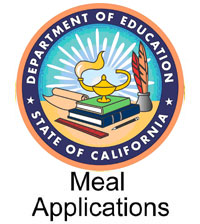
Apply Now for the 2025-2026 School Year!
School meals from the National School Lunch Program (NSLP) and School Breakfast Program (SBP) are available to all GESD students at no cost during the 2025-2026 School Year.
We encourage each household to complete a School Meal Application. This information will allow the district to maximize school funding provided by the State of California for educational purposes. This information will not be shared or utilized for any other purpose.
Please apply online (see link below) or complete a "Free and Reduced Meal Price Application Form." The forms can be printed from this website or obtained and returned (completed) to any school office. You will be notified by mail of your child's eligibility determination. Regardless of eligibility determination all students will continue to receive meals at no cost.
Only complete one application per family. The information provided on the application will be used to determine your child's eligibility for free or reduced-priced meals. This information may also be used for other state or federally funded school benefits. Factors considered in the application process are household size and total household income:
HOUSEHOLD SIZE is considered all persons, related or unrelated, living in your home and sharing expenses, including parents, children and grandparents.
TOTAL HOUSEHOLD INCOME is the income each household member received last month before taxes - this includes wages, social security, pension, unemployment, welfare, child support, alimony, and any other cash income.
Foster children are categorically eligible for free meal benefits. An application is not needed, but documentation of status by a state or local entity familiar with the child's status is required. Foster children may be included in the household application as part of the household size.
Meal Applications Turn in Applications to the Cafeteria or the Main Office
Meal Application 2024-2025 SY.pdf
Pricing Letter to Households 20244-2025 SY.pdf
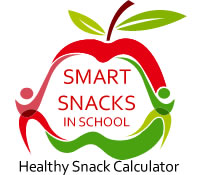
Smart Snacks in School
We are focused on the health of our school environment. Our school district has established nutrition standards for all snacks sold in school by any entity, including parent/student organizations, teachers, boosters, fundraisers, or the food and nutrition services department. These standards for snack sales are in effect from any time before school through 1/2 hour after school, in accordance with the Healthy Hunger-Free Kids Act, the USDA and our district Wellness Policy. Non-compliant foods may be sold from 1/2 hour after school through the end of the day. These standards carefully balance science-based nutrition guidelines with practical and flexible solutions to promote healthier eating on campus.
Kids often need snacks to help them get enough calories (ENERGY) throughout the day. Choosing healthy snacks that add nutrients, like vitamins and minerals, to their diets is essential. Smart snacking is a great way to meet daily nutrient requirements that may be missed at meal times.
Students in our district are offered healthier school meals with more fruits, vegetables and whole grains through the National School Lunch and Breakfast Program. The Smart Snacks in School standards published by the USDA will build on those healthy advancements by ensuring that all other snack foods and beverages available for sale to students in school are tasty and nutritious.
Check your snack's nutritional compliance here!
Nutrition Standards for Foods
Must meet one of the following general food standards:
Be a fruit, vegetable, dairy, protein, or whole grain item* (or have one of these be the first ingredient), or
Be a combination food containing at least a quarter cup of fruit or vegetable.
Must meet the following nutrition standards:
<35% calories from fat (except nuts, seeds, reduced-fat cheese or part-skim mozzarella, eggs, dried fruit and nut/seed combo, fruit, non-fried vegetables, seafood), and
<10% calories from saturated fat (except nuts, seeds, reduced-fat cheese or part skim mozzarella, eggs, dried fruit and nut/seed combo), and
<35% sugar by weight (except fruit**, non-fried vegetables, dried fruit and nut/seed combo), and
<0.5 grams trans fat per serving (no exceptions), and
<200 milligrams sodium per item/container (no exceptions), and
<200 calories per item/container (no exceptions)
Paired foods
If exempt food(s) are combined with nonexempt food(s) or added fat/sugar they must meet ALL nutrition standards above.
If two foods exempt from one or more of the nutrition standards are paired together and sold as a single item, the item must meet for trans fat, sodium, and calories.
Accompaniments
Accompaniments such as cream cheese, salad dressing and butter must be included in the nutrient profile as part of the food item sold. This helps control the amount of calories, fat, sugar and sodium added to foods.
Nutrient Standards for Beverages
All schools may sell:
Plain water (with or without carbonation)
Unflavored low fat milk
Unflavored or flavored fat free milk and milk alternatives permitted by NSLP/SBP
100% fruit or vegetable juice, and 100% fruit or vegetable juice diluted with water (with or without carbonation) and no added sweeteners
Elementary schools may sell up to 8-ounce portions, while middle and high schools may sell up to 12-ounce portions of milk and juice. There is no portion size limit for plain water.
Beyond this, the standards allow additional “no calorie” and “lower calorie” beverage options for high school students.
No more than 20-ounce portions of calorie-free, flavored water (with or without carbonation); and other flavored and/or carbonated beverages that are labeled to contain < 5 calories per 8 fluid ounces or ≤ 10 calories per 20 fluid ounces.
No more than 12-ounce portions of beverage with ≤ 40 calories per 8 fluid ounces, or ≤ 60 calories per 12 fluid ounces. Healthy Fundraisers
Food items that meet nutrition standards are not limited
The standards do not apply during non-school hours, on weekends and at off-campus fundraising events
The standards provide a special exemption for infrequent fundraisers that do not meet the nutrition standards. Each State agency is responsible for establishing the number of exempt fundraisers that may be held in schools each year.
Have fun in the kitchen with these tips and recipes from the USDA's Kids in the Kitchen!
There are plenty of fun ways to liven up snack time using healthy fruits, vegetables and cheeses. Kids will love creating and eating fun-to-make snacks with you in the kitchen! Click on the image to the right to watch a video to learn about some fun and healthy snack ideas that you can make with your kids in the kitchen.
Snacking Tips for Parents
Check out our Smart Snack Approved Product List for delicious snack ideas! Some other tips to consider:
Plan ahead and buy healthy snacks when you shop. You will save money and make healthier choices than buying snacks on the go.
Provide kids with choices and make those choices nutritious.
Pre-portion you child's snacks into small plastic bags to grab on the go.
Combine snacks from at least two food groups to pack more nutrients into your child's diet- it will be more filling and it will hold them over to the next meal.
And remember... space snacks far enough between meals so appetites are not spoiled!
Two Simple Steps to Delicious and Nutritious Snacks
Katie-Jeffery-Lunn, MS, RD, CDN, LDN
Healthy, Fun Snacks and Desserts for the Whole Family
Reyna Franco, MS, RD, CDN
Healthy, Tasty and Creative Snacks for Kids
Katie-Jeffery-Lunn, MS, RD, CDN, LDN
Visit HealthyEating.org for more snack ideas.
